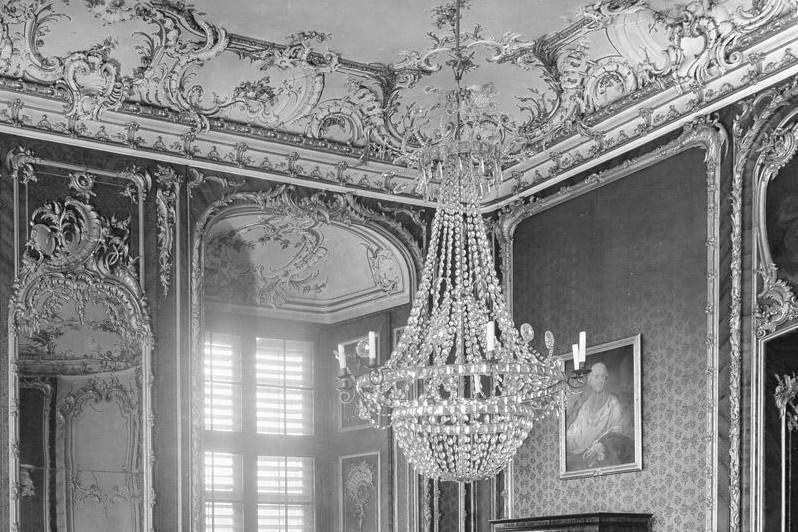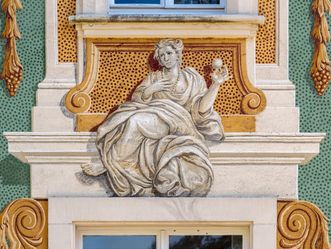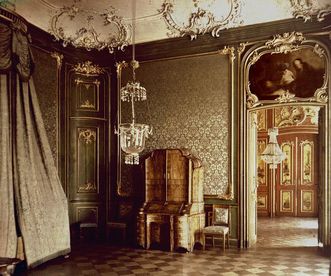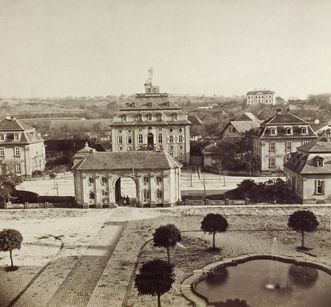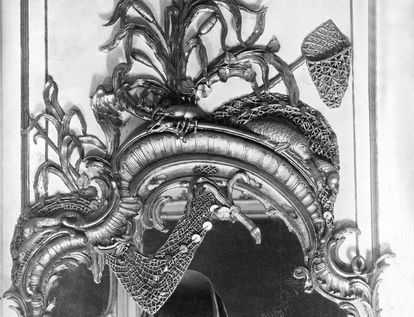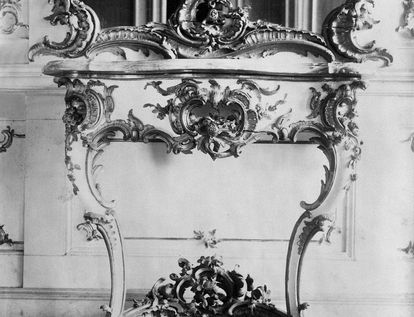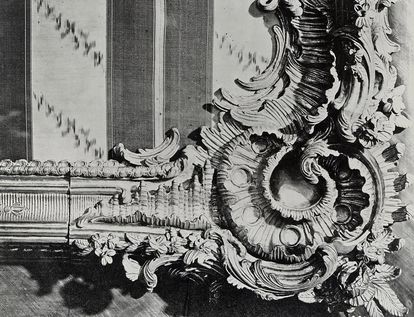Foreign uses
"Not found in any travel guide, the palace lies unknown and unvisited in a small city...," was written about Bruchsal Palace in a photo map from 1871. After the death of Margravine Amalie von Baden, the palace has rarely used for royal purposes instead being used as offices and military headquarters. The plaster of on the facades crumbled. The importance of the palace as a significant monument to architecture and art was slowly recognized.



